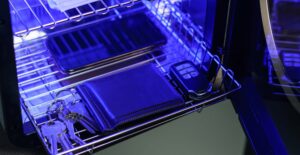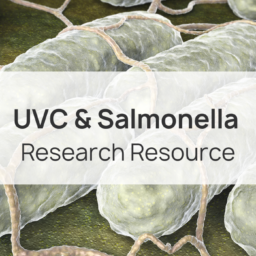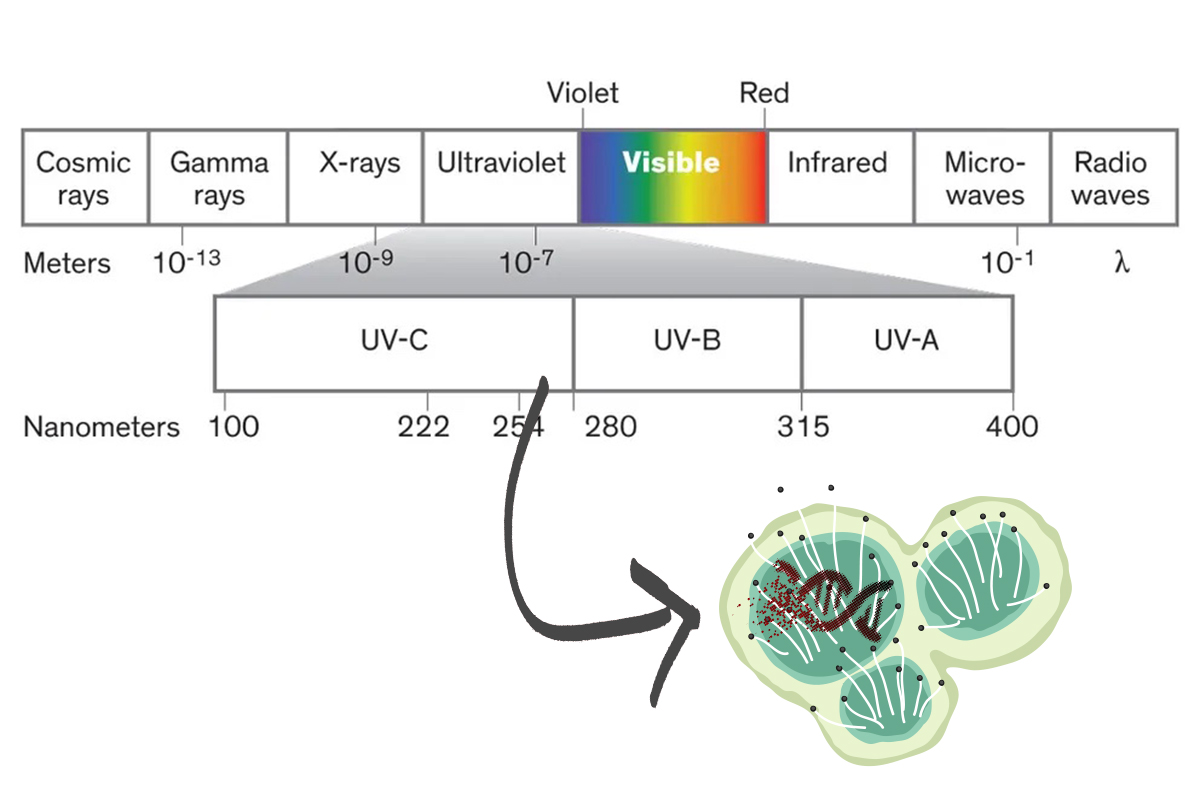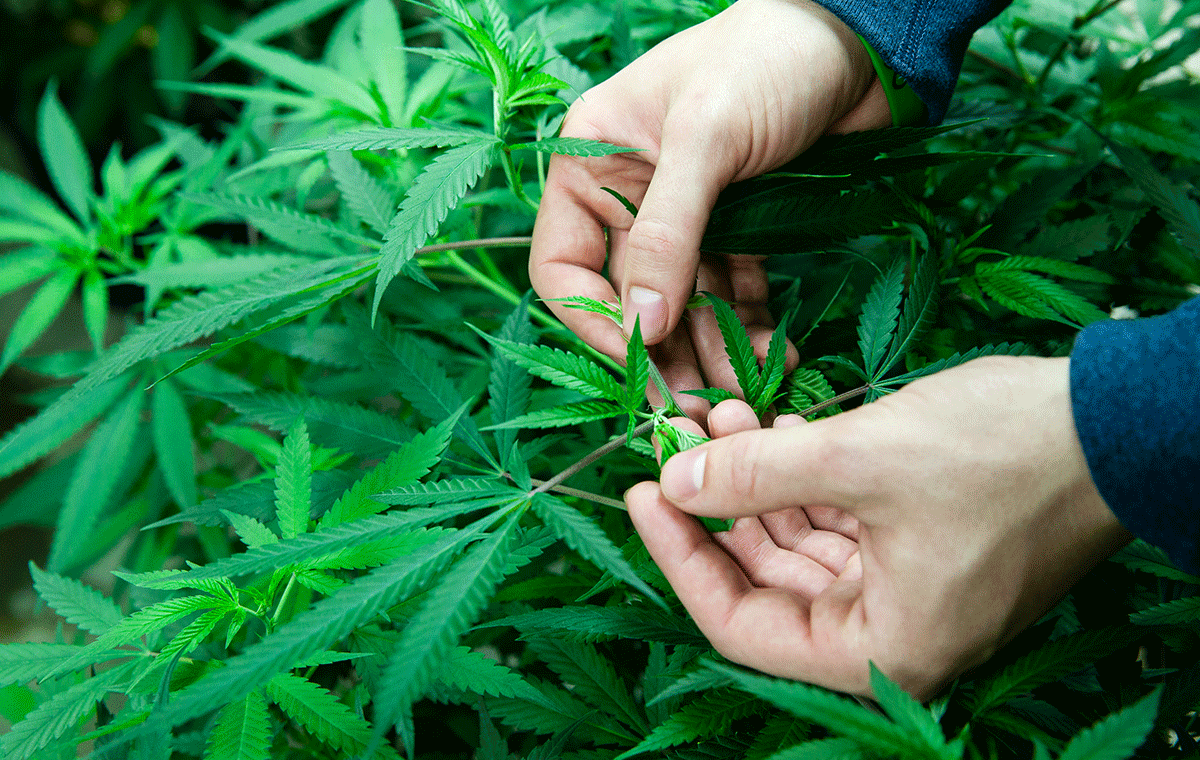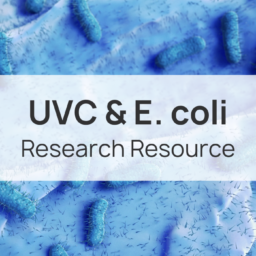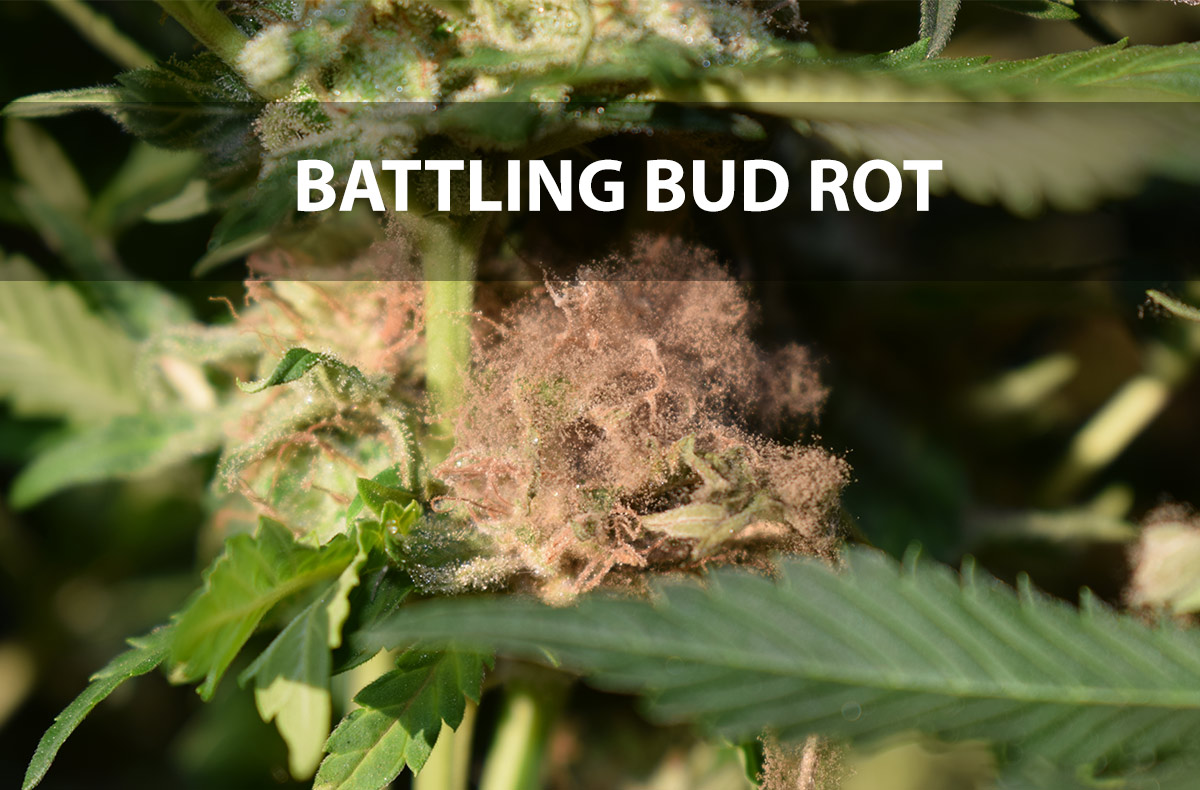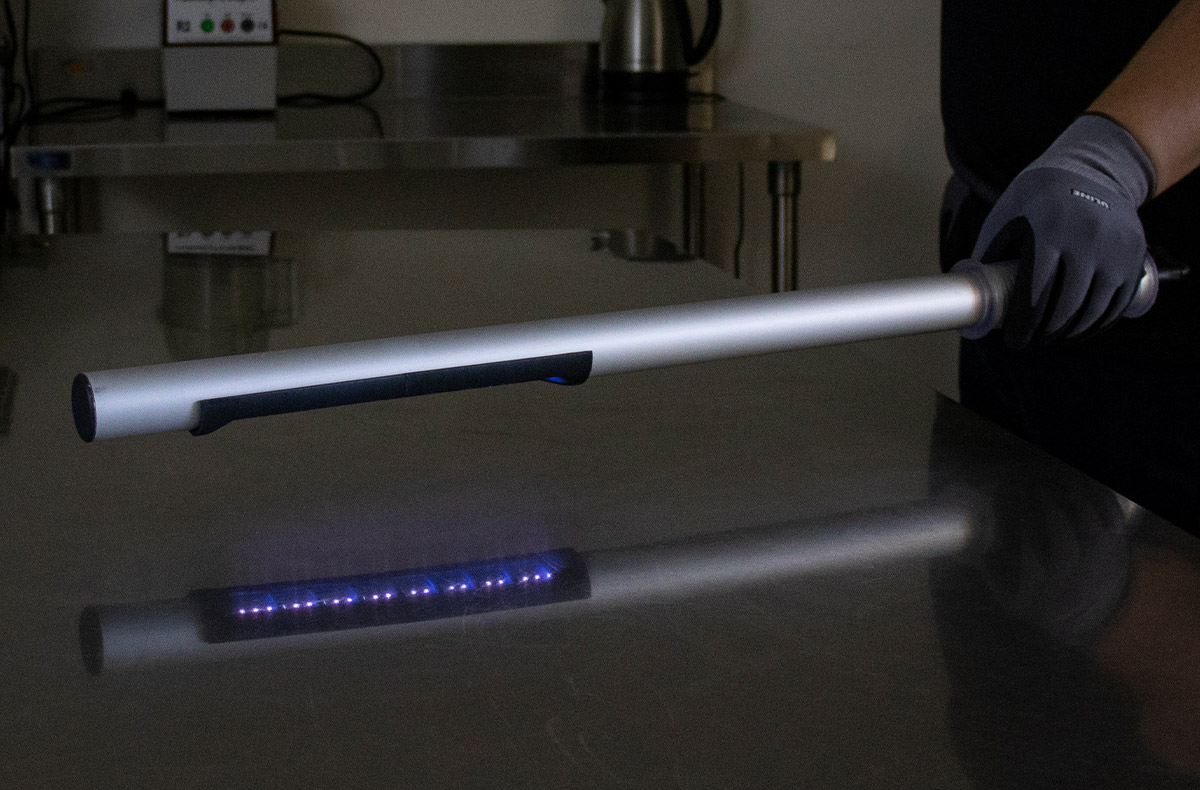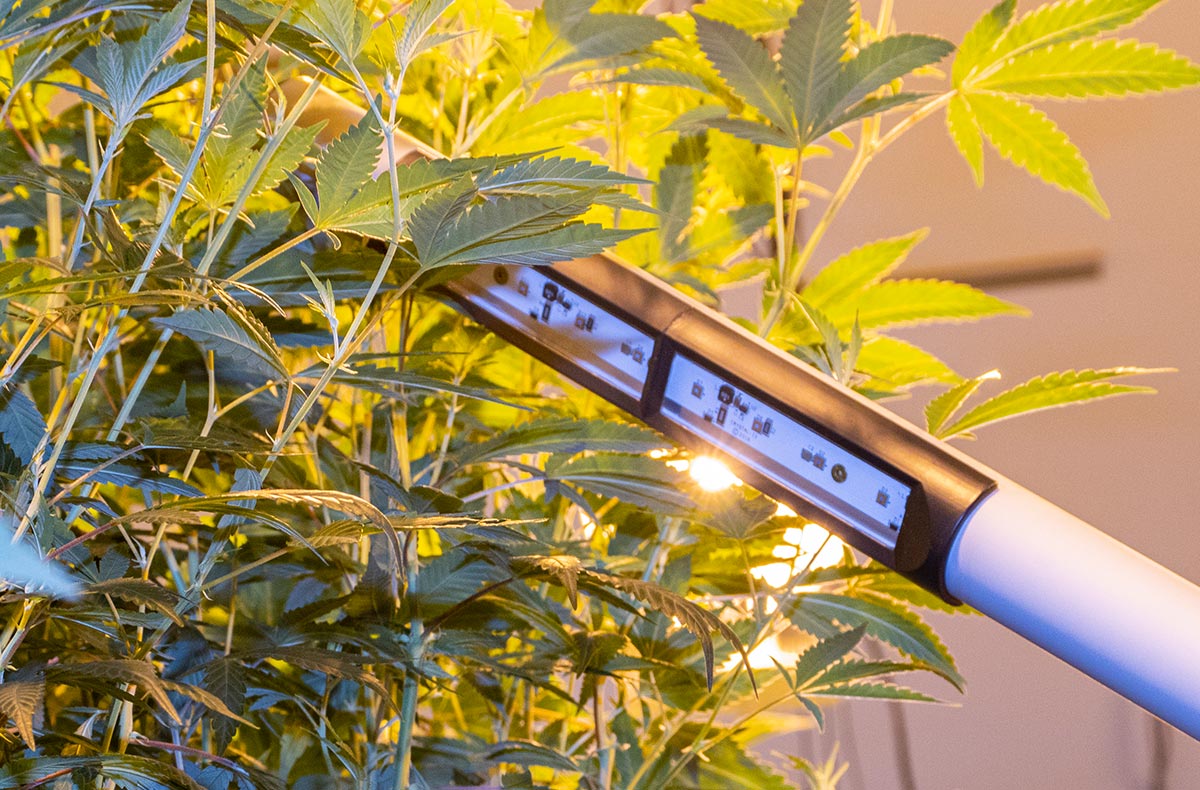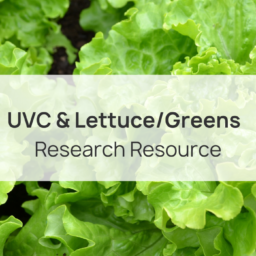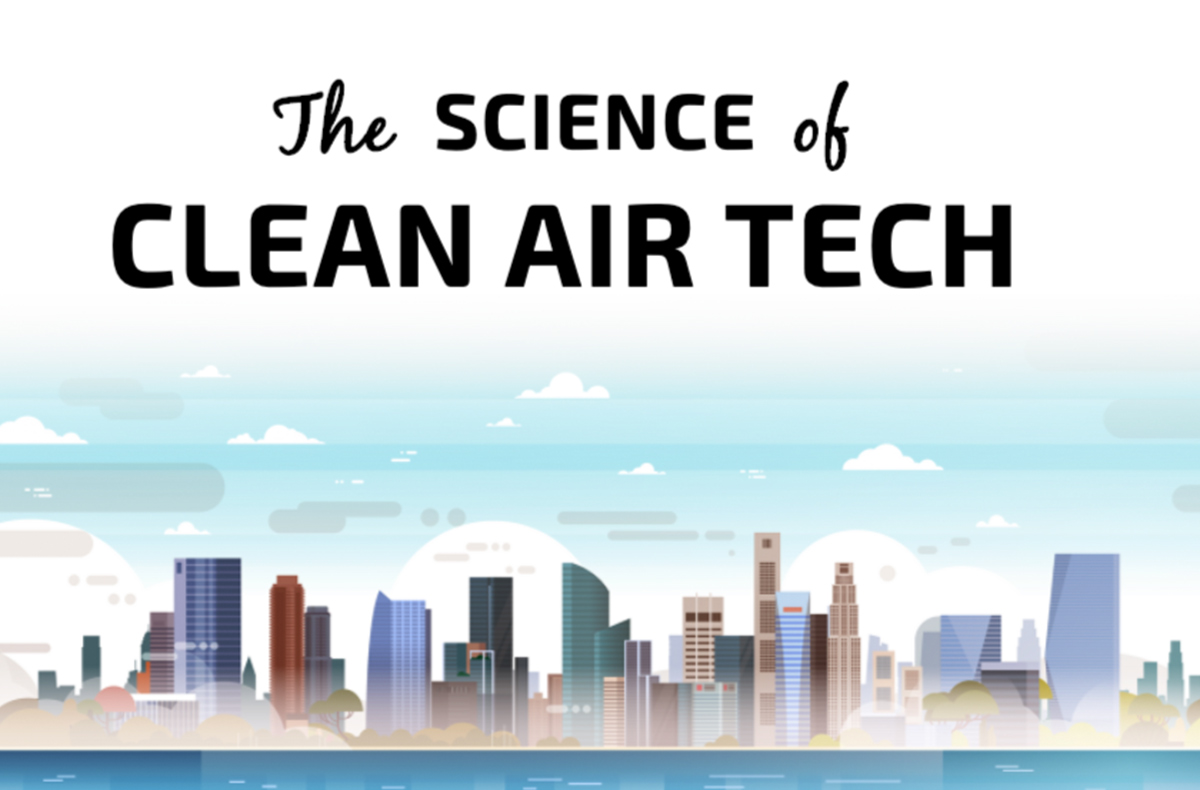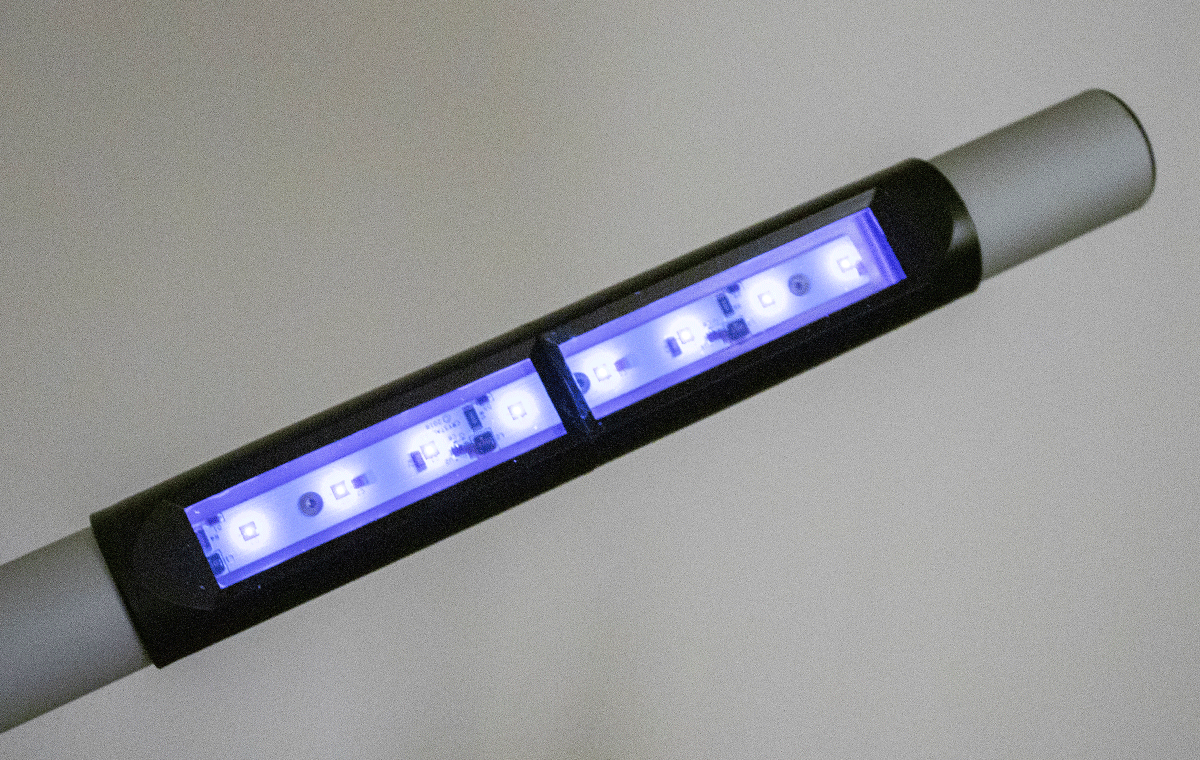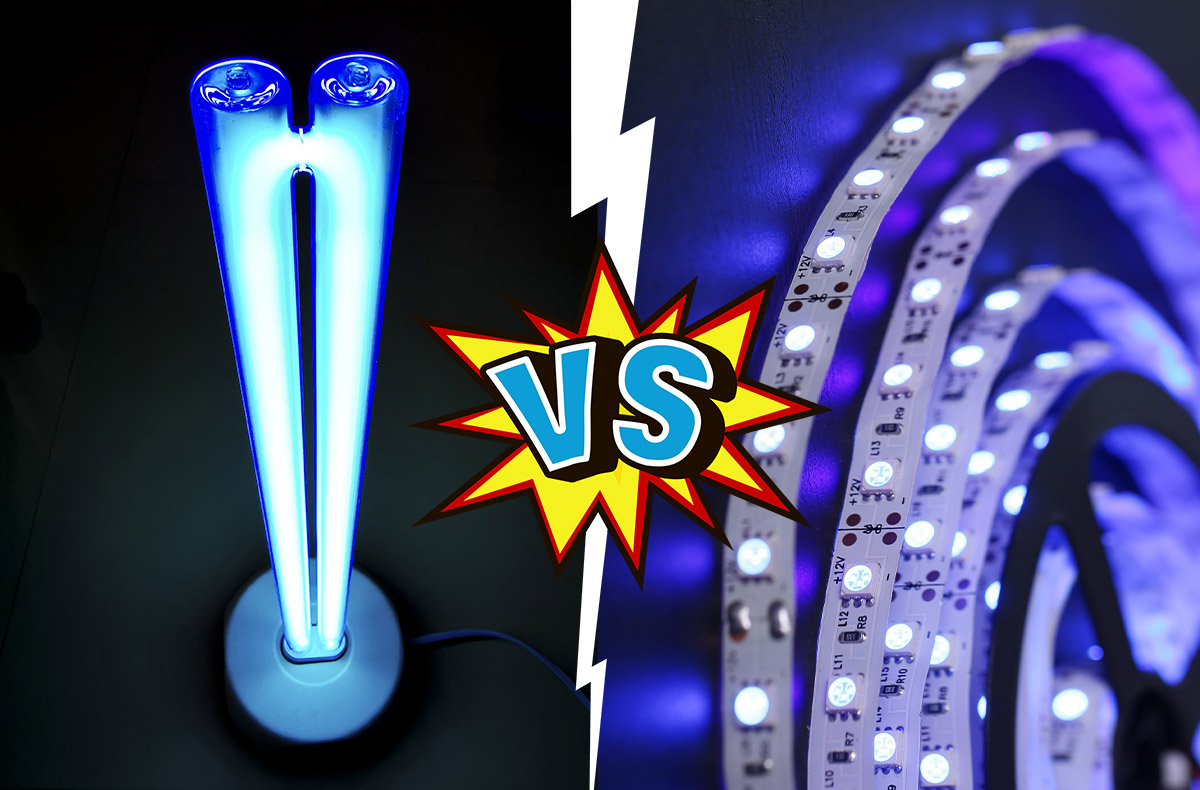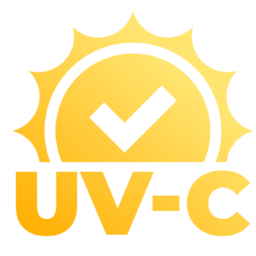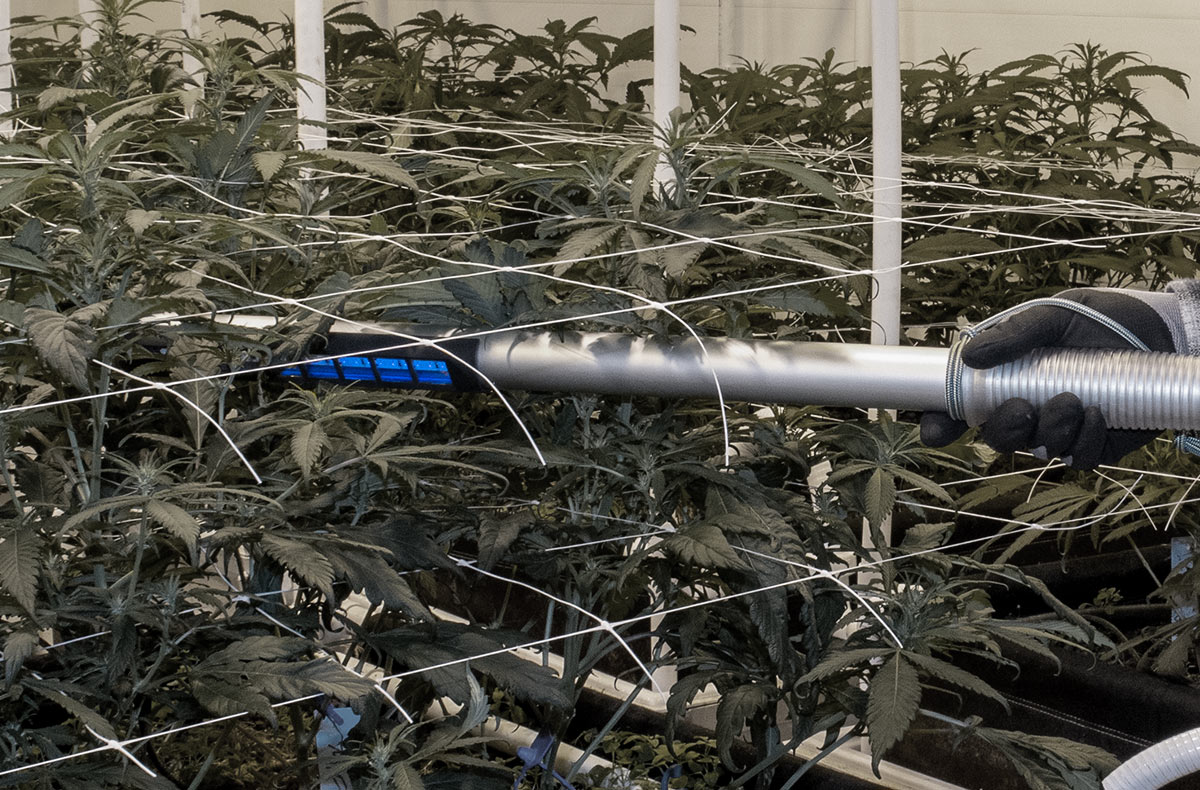
Germicidal UV light, UVC light, far-UVC light. All of these terms have become prolific in with the arrival of COVID-19. But what do they mean? What is UVC light and how is it germicidal?
What is UVC?
Ultraviolet light is composed of three wavelength ranges.
- UVC, from 100 nanometers (nm) to 280 nm.
- UVB, from 280 nm to 315 nm.
- UVA, from 315 nm to 400 nm.
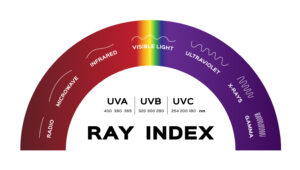
UVA and UVB are more commonly known. They are emitted by the sun and the reason for sunscreen. They are also manufactured in man-made devices such as tanning beds, black lights, UV therapy lights, etc. The greatest concern surrounding these wavelengths is damage to skin and eyes. This occurs through long-term, unprotected exposure. Ultraviolet-C, or UVC, is also emitted by the sun. However, it is not able to penetrate the ozone layer. As such, human exposure to UVC is man-made.
How is UVC beneficial?
UVC was first discovered in 1801 by John Ritter [2], a German chemist, physicist and philosopher. He initially called UVC light “chemical rays.” It was not until the early 1900s that significant knowledge was gained about utilizing UVC for disinfection purposes and effectiveness in killing microorganisms. [3] As research continued, major discoveries were made about its ability to destroy E. coli, tuberculosis and measles. In the early 1990’s UVC became widely used in places like hospitals, schools and airports. [4] Additional uses for UVC are now in air handling units, water purification systems, and even stand alone UVC purification units for empty rooms between uses.
UVC’s germicidal eradication efficiency reaches peak activity around 265 nm. All wavelengths of UVC light will penetrate and damage the DNA and RNA structures of microorganisms. But UVC does so most effectively and in the shortest amount of time at the 265 nm wavelength [5].
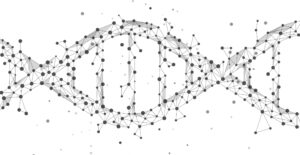
With the arrival of COVID-19, researchers were quick to validate the efficacy of UVC light on the virus. [6] Despite its use in hospitals and other areas, COVID-19 prompted exploration into a broader UVC applications. UVC is being utilized in sports arenas [7], restaurants [8], theatres [9], and by companies striving to keep their employees safe [10]. UVC has even made its way into the home products market. Handheld UVC sterilization units and containers to help people sterilize personal items such as phones and surfaces of their household have risen in popularity.
The Power of UVC
With the rise in UVC use and product sales, experts have drawn attention to potential safety concerns. Namely the risks of UVC to skin and eyes. Direct exposure of UVC to skin and eyes can cause painful injuries and burns, especially at shorter wavelengths. These risks are easily avoided through the use of protective eyewear and clothing or applying UVC in unoccupied spaces.
It is important to understand how to use UVC products safely and in a manner that is effective. Shockingly, this information has been remiss from many consumer facing products. Wavelength corresponds directly to the amount of time needed for exposure. The shorter the wavelength, the higher the frequency. Higher frequency means it emits greater power. Greater power means the exposure time required to kill microorganisms is less. Home use products emit longer wavelengths and lower frequency. This is safer for for the user, but longer exposure time for surfaces and items is needed. Simply waving a home use wand over a surface is likely doing very little for bacteria and virus elimination.
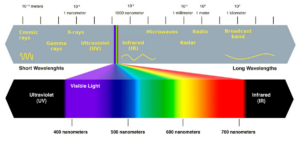
UVC Precautions
Researchers have explored the effectiveness of longer wavelengths on microorganism elimination to lower risk from human exposure. These wavelengths – such as 222 nm – cannot penetrate the tear layer of the eyes or the outer, non-living layer of human skin [11]. This reduces concerns about rapid eye and skin damage. However, these longer wavelengths create ozone. Ozone can damage the lungs (something nobody needs during a respiratory pandemic) and irritate the eyes and other organs. Small exposures to low levels of ozone will likely not harm someone with a healthy respiratory system. But for UVC at these longer wavelengths to be effective, the exposure to air and surfaces in occupied spaces needs to be continuous over a longer period of time. This means the exposure to ozone by people working/living in those spaces is prolonged as well.
Mercury Concerns
Many popular UVC lights – especially in medical and agricultural settings – utilize mercury vapor-based lamps. These lamps can emit powerful UVC and disinfect in a short amount of time. But they require extreme caution when handling as mercury is toxic and the bulbs are glass. Inhaling mercury vapor – such as in a situation where the lamp were to break – is dangerous. It can harm the nervous, digestive and immune systems, lungs and kidneys, and be fatal. Mercury lamps also require more routine replacement due to a shorter bulb life than conterpart LED lights.
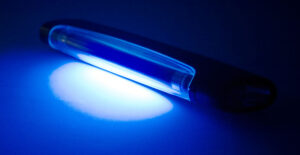
UVC Efficacy
UVC is a line of sight disinfectant. This means that light rays have to directly touch a surface in order to sanitize. It also means if a surface (or the light itself) has dirt, dust or debris on it, the UVC rays will not be effective in killing microorganisms. Many products on the market used in HVAC, agricultural or other dirty settings do not provide protection for the light source. The lights in these applications are not easy to keep clean. This is problematic in two ways. (1) Light products rapidly decline in effectiveness from all the debris and dirt interfering with the light rays. (2) Increased risk of cross contamination. Lights that are difficult and tedious to clean are at higher risk of being vectors for contamination. This proves counterproductive when trying to use the light to disinfect and sanitize.
What can UVC do for you?
Protect Your Employees/Customers
Properly used UVC can help protect your employees and customers from harmful microorganisms. It can also benefit their long-term health by reducing their exposure to irritating and potentially harmful sanitation chemicals through touch and/or inhalation.
Protect Your Crop
UVC is a powerful, chemical free option in a layered defense against harmful crop contamination – such as powdery mildew. Not only will it keep your living plants healthy and producing well, it will also help protect your end product from harmful contaminant residues.
Protect Your Food Product
From handling to packaging to storage, food safety is a highly regulated and serious endeavor. No matter the industry, final food products must be as contaminate free as possible. This includes free of harmful chemicals or microorganisms.
Protect Your Medical Facility
Contaminated surfaces are well known vectors of transmission in hospitals and other healthcare facilities. UVC is an option for assisting in sanitizing surfaces for optimum clean while reducing the need for chemical use.
Safely Harness Powerful Germicidal UVC
The Puren Solutions Katana kills 99.99% of viruses and other contaminants within seconds of exposure. It is a battery-powered LED UVC light wand specifically designed for direct exposure to contamination, making it ideal for hospitals, biomedical, food processing, and more. The Katana’s extreme portability and lightweight, ultra slim design provides all day handheld comfort and ease of maneuverability. It can be fully submerged in disinfectant solutions, for efficient and complete sanitization of the entire unit. Harness optimum disinfection power and a faster rate of disinfection in a durable package 47% lighter than other industrial handheld units.
Learn more at https://elementgrow.com/product/katana-uvc-light-wand/
References:
[2] https://science.nasa.gov/ems/10_ultravioletwaves
[3] Reed, N.G. “The history of ultraviolet germicidal irradiation for air disinfection.” Public health reports (Washington, D.C. : 1974) vol. 125,1 (2010): 15-27.
[5] https://www.ncbi.nlm.nih.gov/pmc/articles/PMC4702654/
[8] https://www.foxnews.com/food-drink/wisconsin-restaurant-installs-virus-killing-lights
[10] https://www.klfy.com/local/engineering-company-uses-uvc-lights-to-kill-coronavirus-bacteria/
[11] https://www.cuimc.columbia.edu/news/far-uvc-light-safely-kills-airborne-coronaviruses, https://www.hiroshima-u.ac.jp/en/news/60119, https://www.nature.com/articles/s41598-020-67211-2


